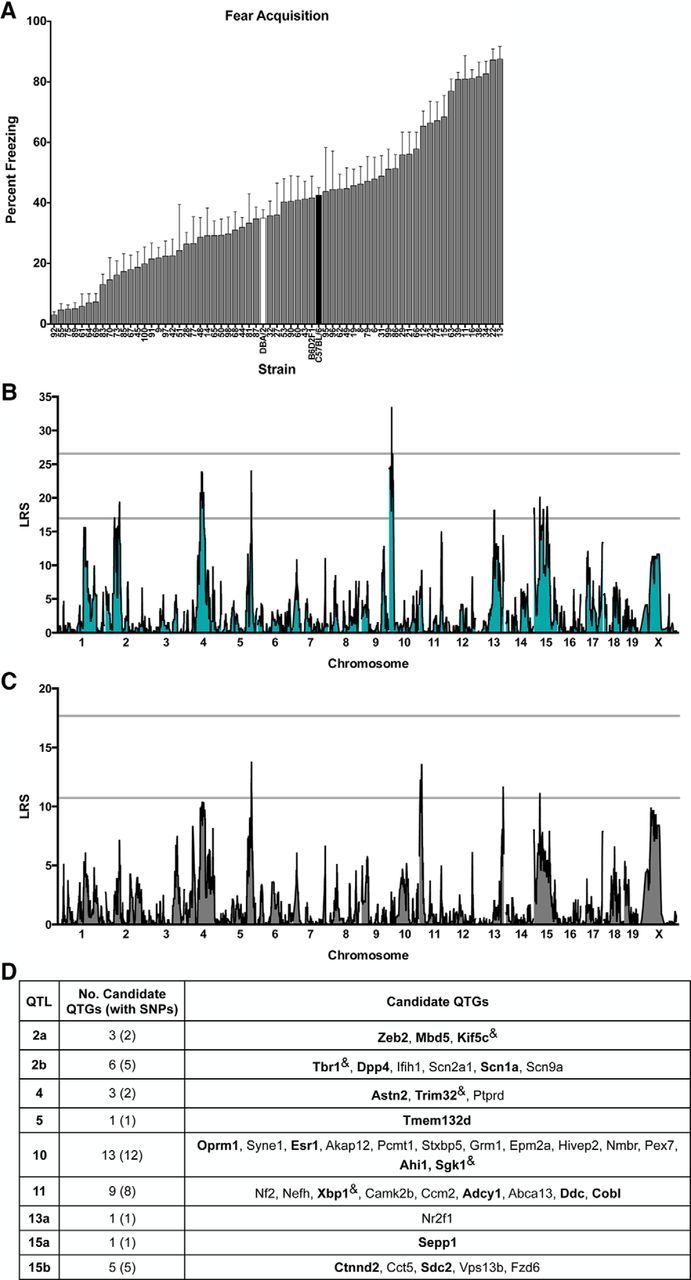Figure 1.

SIM and CIM to identify QTLs for conditioned fear acquisition in the BXD mouse GRP. A, BXD panel shows continuous variation in fear acquisition as assessed by the percentage of time strains spent freezing in the training context after the final pairing of the CS and US. Data are shown as means ± SEM. Parental strains are shown in black (B6) and white (D2). The F1 cross (B6D2F1) and 61 BXD strains are shown in gray. B, SIM reveals a significant QTL (LRS > 26.56; top gray line) on proximal Chr 10 (peak LRS at 14.12 Mb). There are also nine suggestive loci (LRS > 16.95; bottom gray line) located on Chr 2, 4, 5, 13, and 15. C, CIM controlling for QTL 10 using marker rs3686911 reveals an additional suggestive QTL on Chr 11 (peak LRS at 14.12 Mb). D, Candidate protein-coding genes listed in order of location on each on each chromosome and selected based on evidence of involvement in human neurological disorders or key phenotypes related to fear and anxiety, learning and memory, or anxiety and mood disorders. Bolded genes are of special interest based on meeting both criteria or evidence of involvement in conditioned fear or anxiety disorders. “&” indicates genes with no known single-nucleotide polymorphisms (SNPs) between the parental strains.
